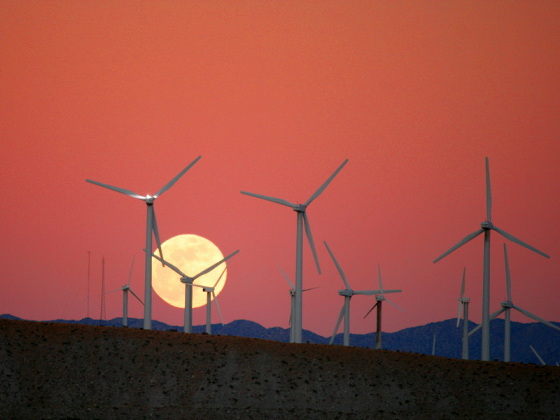As society's energy savings advance, American electric power companies are about to make a big turning point

ByRICO Lee
Due to advances in technology, the demand for electricity across the country as a whole has reached a ceiling in the US, and the situation has remained flat for a long time. It is certain that it is preferable that society as a whole improves efficiency and waste is eliminated and carbon dioxide emitted is also reduced, but the electric power company that produces the electricity can earn revenue as in the past It is a situation that is forced to seek out new ways of surviving for the future.
Electricity demand is flat. Utilities are freaking out. - Vox
https://www.vox.com/energy-and-environment/2018/2/27/17052488/electricity-demand-utilities
Electricity consumed to support the people's lives and to produce the wealth of the country has once been a pair with the growth of the national economy. Electricity consumption has continued to expand so as to keep pace with economic growth, but signs of change have emerged from around the end of the 20th century. In the United States, since 1998, the situation where the graphs of power consumption and power consumption (GDP) which have almost agreed until then do not agree have continued. Electricity sales volume (blue) shows sluggish growth, while GDP graphs continue to grow almost ashamed (white), while the volume of electricity sales (blue) shows sluggish growth, with the pace remaining steady since 2007.

Background to this situation is the fact that society as a whole promotes energy saving, the decline of heavy industry consuming a large amount of electricity (overseas runoff), and the situation that each household has become able to produce electric power themselves doing. But that change is a pain to the company that supplies electricity, and the pace of change is urgent, and each company is in a situation where they are bothering their response.
It was made during the Great Depression of 1933Tennessee River Basin Development Corporation(TVA) still has about 30 dams, and supplies electricity to about 9 million people living in seven neighboring provinces. TVA has announced "Integrated Resource Plan" (Integrated Resource Plan: IRP), which shows the prospects for electricity demand in the next 20 years every five years, and has made investment plans necessary for stable power supply.
Many investments are required for the power infrastructure, and the amount of money is enormous, so TVA and other power companies need to make a careful demand forecast. TVAIRP announced in 2015, There is no need for a large-scale investment to expand the base electric power anymore, prediction that the demand for electricity will decrease due to the progress of high energy efficiency and the "decentralization of electric power production" that generates electricity at home etc. It was upright.
For electric power companies, it was predictable tough contents, but actual society exceeded that prediction. On February 22, 2018, only three years after the announcement of the IRP in 2015, TVA said, "Electricity sales forecasts in 2027 will be 13% lower than the results in 2007. This is because 85 years of TVA's It is a long-term decline that can be seen for the first time in history "Announced. Also, in order to adapt to the rapidly changing situation, the next IRP in 2015 will be out of "every five years" and planned to be announced in 2019 four years later.

BySantiago Medem
To supply electricity, TVA, the government-owned "public corporation", is responsible for "low cost, informed risk (convicted risk), environmental responsibility, stability, diversification of power sources and market changes Flexibility to respond "and other factors are required. Meanwhile, each electric power company that supplies electricity as a private company is regarded as a proposition to conduct economic activities for the benefit of shareholders and other stakeholders. However, these companies are unable to raise revenue by "selling electricity" under the regulations of the law prohibiting market monopoly. Instead, each company invests in power generation facilities and infrastructure and uses the return on investment as a source of profit.
This means that "you can not make a profit without investing." And in order to invest, it is necessary to grow, but here is the big wall that "the demand for electricity is on a downward trend" will come true. In order to cope with this harsh situation, each electric power company will be forced to uncover unprecedented viewing. Each power generation company aims to survive by the merger while promoting cost reduction, and each sales company that sells the purchased electricity aims to secure profits by advancing investment in the development of the electricity transmission network.
Nonetheless, each company that can not expect improvement as before says that further improvement in efficiency and conversion to cleaner energy are required. We can not expect improvement in constitution if we remain in the conventional framework, and reorganization is progressing in various places. Although regulations and politics and other efforts are required for this, it is already changing in areas such as New York, California and Massachusetts.
On the premise that electric power enough to meet demand can be supplied, the reduction of electricity demand leads to good results for society in the sense that it is not necessary to reduce the cost of society as a whole, reduce pollution, and develop expensive infrastructure. Now that the connection between GDP and electricity demand has ceased, each company enters a tough period of survival, which may be thought of as leading to the development of highly efficient energy production technology.

ByChuck Coker
Related Posts:
in Note, Posted by darkhorse_log







